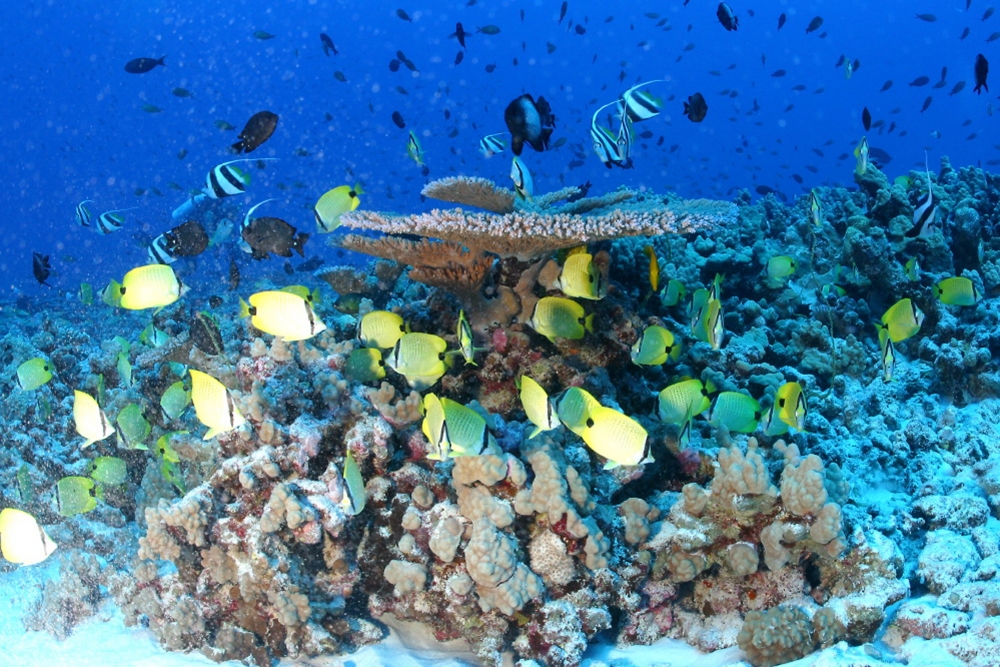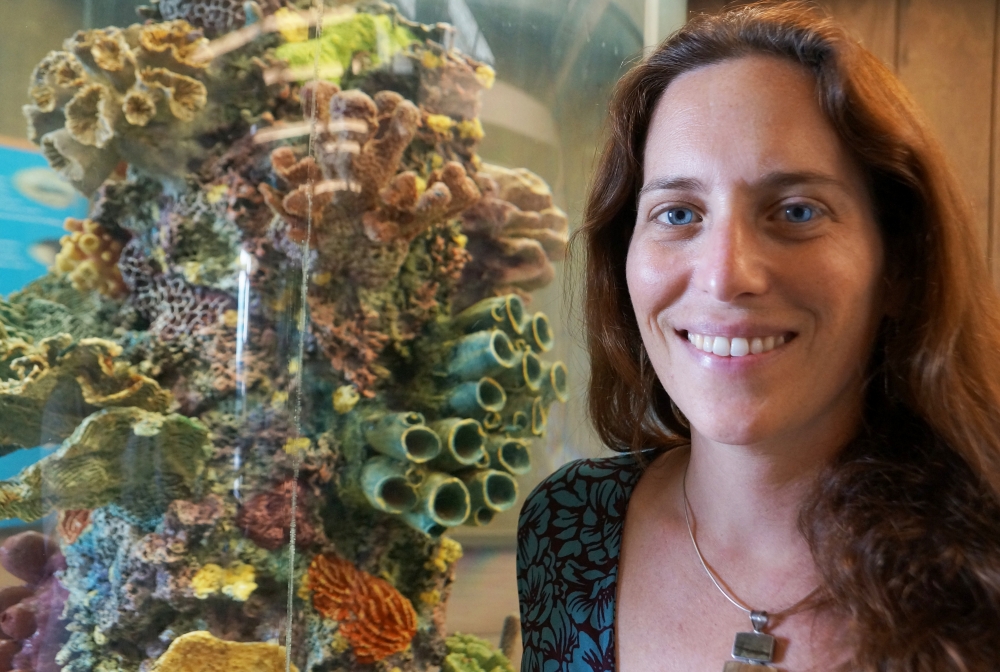
Protecting Coral Reef Biodiversity

Known for their stunning arrays of colors, shapes and life forms, coral reefs are captivating and critical examples of extreme biodiversity. They also are home to myriad marine animals whose genetic diversity — variability in DNA that imparts the capacity for adaptation, speciation and resilience in the face of stress — is equally important.
But this diversity varies across species and across islands. A new study by UC Santa Barbara marine biologist Kimberly Selkoe and colleagues investigates why and how this is the case. The researchers found that areas that experienced the most frequent coral bleaching conditions also showed depressed levels of genetic diversity — not just for corals but for the entire community of fishes and other invertebrates associated with those habitats. Their results appear in the journal Proceedings of the Royal Society B.
“This negative impact of thermal stress on genetic diversity suggests that climate change can compromise the adaptive capacity and genetic integrity not just of corals but of the entire coral reef community,” said Selkoe, an associate research biologist at the Marine Science Institute. She also is an associate at the National Center for Ecological Analysis and Synthesis and an adjunct professor at the campus’s Bren School of Environmental Science & Management and is affiliated with the Hawai’i Institute of Marine Biology.
Genetic diversity is widely accepted as critical for adaptation to a changing climate, and identifying features of the landscape associated with hotspots of genetic diversity is a key strategy for environmental conservation. The team of scientists leveraged 17,000 unique DNA samples taken from 47 species of reef animals across the Hawaiian archipelago. With this big data approach, they discovered that large areas of intact coral reef with extensive live coral cover not disturbed by humans or climate change harbor the greatest amount of genetic diversity.
Prior to this study, little direct data existed to guide debates about whether many small marine reserves versus one large reserve would be better for preserving genetic diversity. These new findings suggest that although Papahānaumokuākea Marine National Monument (PMNM), which surrounds the Northwestern Hawaiian Islands, safeguards the majority of Hawaiian reef biodiversity, populations in the main Hawaiian Islands (MHI) are genetically distinct and warrant additional protection.
The researchers found that genetic diversity varies across the MHI, extending the argument for targeted protection of reefs throughout the MHI. Notably, the island of Hawaii has the greatest amount of coral reef area, harbors the greatest proportion of genetic diversity and serves a unique and particularly influential role due to its large size at the margin of the chain. The islands of Nihoa and Niihau, which sit at the transition between PMNM and the MHI, also stand out and warrant future research and protection due to unexpectedly high genetic uniqueness and unusual fish composition.
“Our study provides support for campaigns such as the Big Ocean initiative, which seek to protect large areas of pristine coral reef habitat,” said co-author Robert Toonen of the Hawai’i Institute of Marine Biology. “However, we need a diversity of approaches to preserve marine biodiversity because one size simply does not fit all in conservation efforts.”
In the future, the team will follow up on intriguing evidence in the data set that suggests the same large-scale ecological rules that predict species diversity also predict genetic diversity. “If these relationships can be confirmed and replicated elsewhere, DNA sampling may one day allow rapid assessment of species diversity and new metrics of resilience and adaptive capacity,” Selkoe explained.



